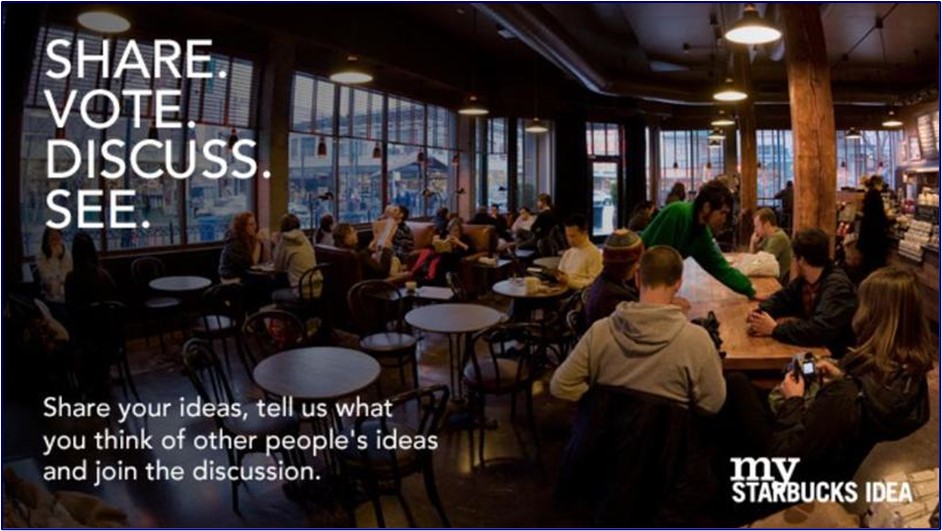Before you can begin to think about the details of what you will offer to a market, you must first develop a clear sense of what exactly is missing or wrong in that market.
This involves such questions as... Who are the users of your offering? Are there different users? What are they trying to accomplish? Are they all trying to accomplish the same thing? What are their real motivations? What do they want out of the offering? What are the big roadblocks standing in their way? What makes the difference between a great experience, a ho–hum experience, and a nightmare? Where does the greatest value lie for each user? What are the most important touchpoints? Is it the same for all users, or is there a context for differing and varying customer experiences?
These and other key questions are ones that have to be answered correctly if you are to succeed at developing great and innovative new offerings. Their answers provide the actionable insights you need to define completely new ways of meeting customer and market needs.
When organizations are very customer–focused, they may already have a clear sense of their customers' pain points. But when organizations are more market–focused or technology–focused, as many are, their customer base tends to be broader and more fragmented, not lending itself as readily to direct observation. For these cases, there is a large arsenal of research methods we can avail organizations to in the quest for new answers. If they are to ultimately know the right path to take, then this type of research will have to be brought to bear on their challenge.
We refer to this work as "User Needs Discovery", or just simply "Needfinding". It involves behavioral research and analysis aimed specifically at studying how would-be customers use certain products, receive certain services, or otherwise engage in certain experiences. Its intention is to uncover deeper insights into the challenges and difficulties they encounter (even if these are at times subconscious and unspoken), as well as new opportunities for resolving these. Since this work is generally tied to a specific development project, it can be thought of as a micro exercise. Its findings, however, are sometimes applicable across multiple projects if the offerings involved are similar or otherwise overlap.
We carry out this part of the Emergent NPD Process under the auspices of our Discovery Practice. For more information on how this work is done, refer to our Insights Research page.
There are three primary types of research we undertake for User Needs Discovery. These are: 1) Secondary Research, 2) Qualitative User Research, and 3) Quantitative Market Research.
When initiating this work, we first begin by developing an Insights Plan – our intended plan of attack for discovering the unmet and/or under-met user needs in a particular market situation. Within these plans, it is not uncommon for qualitative and quantitative research studies to intertwine with one another. This happens in a cyclical manner as new insights continue to be refined and validated. Since along the way new insights tend to be discovered that were not foreseen at the beginning, the Insights Plan is considered a living document – continuing to adjust and evolve as needed so that in the end we can achieve the objective at hand.
It should be noted that it is very common for quantitative and qualitative research studies to intertwine, inform, and otherwise reinforce one another, with the quantitative studies telling us more about the "what" in the market, and the qualitative studies telling us more about the "why" in the market. It is of course very important for us to have and understand both of these types of insights if we are to use them to design and develop a winning breakthrough solution for our client.
One key outcome of our Needfinding research, and an input into many of the other aspects of our design work, is user profiling and market segmentation. These are addressed further down below.
Secondary Research refers to the study of all relevant and pertinent information that has been previously compiled by other, third-party sources. This can include research studies conducted by industry consortia, trade groups, professional organizations, private researchers, syndicated research organizations, universities, and so on. It can also include more common information such as competitive product information published on competitors' web sites.
Secondary Research often helps us to fill in the missing details around more substantial pieces of information we have amassed elsewhere. It is also – in comparison to our Primary Research – relatively fast and cost–effective to compile. Its trade-off, however, is that it is generally less focused on the specific question or objective at hand than is the Primary Research.
Qualitative User Research — also known as Business Ethnography — is focused on observing, questioning, and studying individual users of a product, service, or experience, in order that we can more deeply understand these users and the needs and desires they have around using this product, service, or experience.
What, specifically, we are trying to understand here are actually several different things about the situation involved. First of all, we need to understand what outcomes users wish to achieve with the product, service, or experience, and why they wish to achieve those particular outcomes... what their underlying motivations are... their needs, desires, expectations, and preferences, and even more deeply... their core beliefs, values, and concerns that shape these motivations. We're also interested here in understanding how they interact with, and respond to, the product, service, or experience... what external stimuli they encounter, what their internal perceptions of these stimuli are, and then what behaviors and attitudes they manifest as a result of this, including, in these situations, the cognitive and physical actions they take, and the cognitive, emotional, and physical reactions they have. Going back to the product, service, or experience involved, we're also interested in knowing what "jobs" users expect to complete on their way to achieving their intended outcomes, and why they expect to complete those particular jobs.
One thing we often find in this process is that what users say they do, and what they actually do, are quite different from one another. When confronted with this reality (usually via proof such as a video recording), users are often quite surprised by their own dissonance. This tends to reveal subconscious biases and other hidden influencers at work.
As is perhaps suggested from the types of questions presented here, Qualitative User Research – by its very nature – borrows heavily from the fields of psychology, sociology, and anthropology. As such, it involves research methods that try to understand users' perceptions, emotions, and behaviors as they relate to using a particular product, service, or experience. The goal in each case is to uncover the hidden insights we desire about the users' needs, motivations, and decision processes in the context of using that particular product, receiving that particular service, or encountering that particular experience. These methods thus study – amongst other things – users' sensory perceptions, emotional triggers, and behaviors – including any compensatory behaviors they may exhibit (which offer potential clues into current shortcomings). The process typically involves establishing and examining one or more specific use cases (situations) of interest, and then proceeds to conducting these various observational analyses.
As one can see then, attempting to undertake high-caliber Qualitative User Research can be quite a tall order, if it is to be done right and thereby produce reliable answers to these critical questions. Having these answers, however, is crucial to being able to design and develop breakthrough new products, services, and experiences – the type that speak to these users' more fundamental needs and desires, and thus truly resonate with them at a deeper level, and therefore succeed commercially in the marketplace. To this end, we employ an extensive array of research methods for undertaking this research, each of which allows us to answer one or more of these critical questions.
These methods also involve what are known in the world of Design Thinking as Design Methods – Design Methods and Qualitative User Research Methods essentially being the same thing. Legacy Innovation Group clusters the Design Methods into four distinct categories – the Observe Methods (primarily just observing subjects from varying distances away); the Question Methods (engaging subjects in direct inquiry); the Experiment Methods (trying things out directly – the smallest group of methods); and the Study Methods (an extensive array of analyses used to study and understand insights more deeply – by far the largest group of methods). Each of these is focused on a specific type of research activity and therefore produces a specific type of user insight.
Many of the methods we use are co-creative in nature, meaning that we bring the test subjects into the process and have them do something creative for the researchers, such as answer questions, draw diagrams, sketch images, build collages, sort cards, record themselves, and so on. Known as Immersive User Research, these methods let the researcher see and hear – directly from the subjects – tangible evidence of their thought processes, thereby allowing them to probe much deeper into those processes so as to better understand the cognitive and emotional reasonings going on behind them.
Some of the Observe Methods that we commonly use include: Absence Thinking, Fly On the Wall, Still Photo Survey, Behavioral Archeology, Spatial Behavior Mapping, Contextual Inquiry (Shadowing, or Rapid Ethnography), Guided Tours, Workarounds, Customer Innovations, and more.
Some of the Question Methods that we commonly use include: Five Whys, Question Laddering, Why-How Laddering, Contextual Interviews, Behavioral Interviews, Empathy Interviews (aka In-depth Interviews), Focus Groups, Unfocus Groups, Narration, Behavior Sampling, Extreme User Interviews, Personal Inventory, Journal/Diary Study, Camera/Video Journal Study, Draw the Experience, Collaborative Sketching, Conceptual Landscapes, Collaborative Mind-Mapping (Cognitive Maps), Card Sort, Free Listing, Word Concept Association, Collage, Participatory Co-Creation (Design), Opportunity Workshops, and more.
Some of the Experiment Methods that we commonly use include: Empathy Tools, User Scenarios, Role Playing (aka Informance, or Be Your Customer), Bodystorming, User Testing, Cafe Testing, Usability Testing, Scenario Testing, Try It Yourself, and more.
Some of the Study Methods that we commonly use include: Rapid Facilitation, Beginner's Mindset, Activity Analysis, Persona, Empathy Map, Storyboarding, Cognitive Task Analysis, Analogous Empathy, Barrier & Trend Mapping, Metaphor Mapping, Saturate & Group, Story Share & Capture, Point of View Madlibs, Point of View Want Ads, Critical Reading Checklist, Process Flow Analysis, Swim Lanes, CX Journey Mapping, Concept Models, Anthropometric Analysis, Competitive Product Survey, Error Analysis, Ecosystem Visualization, Stakeholder Analysis, Value Webs, 2x2 Matrices, Indirect Benchmarks, What?How?Why?, Powers of Ten, Backcasting, Six Thinking Hats, Historical Analysis, Era Maps, Brainwriting, Brainstorming, Piggybacking, How Might We Questions, Constraint Imposition, Collaborative Sketchboards, Affinity Analysis, Scenario Planning, Long-Range Forecasts, Tangible Futures, Brandcasting (aka Brand Swap), Design The Box, Concept Videos, Collaborative Inspection, I Like / I Wish / What If, Feedback Capture Grid, Alignment Model, and more.
As can be seen, there is a vast arsenal of Design / Research Methods that our researchers can call upon to develop the user insights needed. In each and every case, we select only those methods that fit with the need at hand for the specific types of insights we require in that case. Since much of this work will be focused on understanding the need space around a particular product, service, or experience, we tend to rely most on the observe, question, experiment, and study methods that allow us to explicitly explore that particular need space.
While Qualitative User Research studies such as these do require time and effort to complete, they must be done, as they are fundamental to being able to pursue Human-Centered Design – the philosophical underpinnings of Design Thinking. In all cases, the goal of Human-Centered Design is to develop an empathic understanding of our customer and their situation in a particular context. The result of this is that we have empathy for them in that situation, and can therefore understand why they think and feel what they do, and can appreciate – from their perspective – why those thoughts and feelings are considered valid in that situation. This is the fruit of having an empathic understanding of our customer.
Further down the road in our overall design process, the findings of these User Research studies will give our Design Team the insights they need to be able to design new solutions using Design Thinking. We firmly know and believe that this is paramount to being able to conceive, design, and develop solutions that will meet these users' true needs and thereby resonate with them once they have been made available.
Quantitative Market Research refers to primary research used to study and understand the perceptions, attitudes, thoughts, and behaviors of a market in the aggregate (the entire market and/or segments thereof). Because it involves querying a large group of respondents all at once (known as our "panel"), their answers must be aggregated quantitatively (thus the name), and then evaluated statistically to ensure that the conclusions we are drawing from them are in fact statistically-valid conclusions and can thereby be generalized to a larger population or group.
Quantitative Market Research allows us to develop a deeper understanding of the relationships between specific offerings (or proposed offerings) and specific markets (or market segments) – at the aggregate market level, rather than at the individual user level examined above. This similarly aids us in being able to craft well–conceived customer experiences as we move further down the road in our design process.
For carrying out Quantitative Market Research, we employ a variety of different research methods. These methods are predominantly survey based, in which we identify and query a large, highly targeted group that is representative of the market – or markets – we are interested in. The questions we ask in these surveys are designed to uncover meaningful insights about this group's collective needs and desires. More specifically – being focused as they are on the group's perceptions, attitudes, thoughts, and behaviors – the questions tend to relate to specific struggles they have with current ways of doing things, where current pain-points exist, and how they would otherwise introduce and prioritize certain product or service attributes were they available.
The vast majority of our surveys are conducted online. Being online, they can also be responsive in nature, meaning that we can actively tailor subsequent questions based on the preceding answers. This tends to yield very high quality and relevant information for what we are trying to learn.
The findings of these surveys – once aggregated and analyzed statistically to ensure their statistical significance – are then used to help us further augment and flesh out the details of the insights we are obtaining in the Qualitative User Research above. In this manner, our quantitative and qualitative research often intertwines, informs, and otherwise reinforces one another. It is of course very important for us to have and understand both types of insights if we are to then take them and use them to design and develop a winning breakthrough solution.
A key step in defining well–conceived customer experiences is profiling the users of your offering and then segmenting the overall market into corresponding market segments.
Using the insights gained above, we identify and document the pertinent psychographic and demographic characteristics of concern. This includes those of lead users & early adopters, early & late majorities, and laggards – with the early & late majorities typically being taken as our core profiles of concern. For every product or service category, there will be a matching series of user profiles, each with their own set of defining characteristics specific to what they want and need from the offering (their "outcomes"), as well as how they prefer to use the offering (their "jobs to be done"). We reflect each of these in their own unique and representative persona – a semi-fictional profile portraying that particular customer. For each such persona / customer, the underlying value proposition must therefore be somewhat different.
As a consequence of having multiple different customer profiles, the overall market for a particular category can thus be segmented according to these different profiles and their respective psychographic & demographic markers (primarily the psychographic ones). The resulting segmentation can then be used to inform your innovation, market, brand, offering, and design strategies for what you will ultimately need to deliver to market.
We are well-seasoned at being able to take market & user insights and distill them into highly usable profiles and market segments that can be subsequently used to fine-tune brand and attribute models so as to optimally resonate with one or more specific segments. Our approach to market segmentation is based squarely on the practice of Outcome-Driven Innovation (ODI) – by far the most effective approach to market segmentation in use today.

CEOs come and CEOs go. Some are excellent. They generally ‘get it’. Others not so much. They really ‘don't get it’. What makes the difference between these?
READ MORE
There's an insidious debate that's bounced around for probably the better part of twenty years now. It's the debate of whether or not ‘innovation is everyone's job’...
READ MORE
Innovation Spaces – which can refer to any space intentionally designed to foster and facilitate good innovation work – come in all sorts, shapes, and sizes...
READ MOREWe partner with committed business leaders to make their organizations the driving forces in their markets.
CONTACT USSign up for our newsletter.
NEWSLETTER SIGN-UP